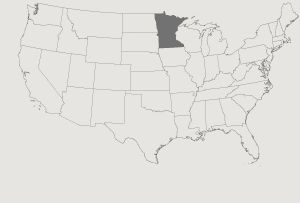As a child in central Laos, Bounxou Chanthraphone learned weaving and tie-dyeing from her mother and grandmother. Later, through formal study, she became an expert in the weaving styles of central, northern and southern Laos.
While living in a refugee camp in Thailand in the late 1970s, Chanthraphone taught weaving and the Lao language to children and adults at the Japanese Volunteer Center School. "I couldn't take anything to Thailand, but only my life and my weaving skills," she has said. "I was very grateful to my mother and grandmother because with weaving skills, I was able to make a living and carry on the Lao legacy." Now when she weaves, she says, "it is for me."
Chanthraphone immigrated to the United States in 1982 and settled in the Minneapolis area. She lives in Brooklyn Park, Minnesota, where she works as a youth coordinator at the Center for Asians and Pacific Islanders. And she continues to practice both weaving and silk tie-dyeing and to teach those art forms at work and at home. Chanthraphone has been a dedicated volunteer teacher for the Lao Parents and Teachers Association. She weaves custom pieces for young traditional dancers and explains their significance in workshops and demonstrations, hoping to impart her knowledge and skills to the next generation of Laotian Americans.
Basic traditional Lao weaving uses black and white, but other, more complex designs are richly colorful. Chanthraphone uses a variety of looms to create intricate designs. She works with images of food, animals, butterflies and birds and sometimes includes computer designs. She creates wall hangings, tablecloths, shawls and women's clothing. Some of her garments are worn by local Laotian women on special occasions.
Chanthraphone often works with silk thread colored with natural materials such as berries, roots and tree bark. Her designs incorporate symbolic images from her culture, such as the dragon, a sacred creature with protective powers, and the elephant, which connotes strength, peace and harmony.
"There is no life without arts," she said, "and no arts without life."






























